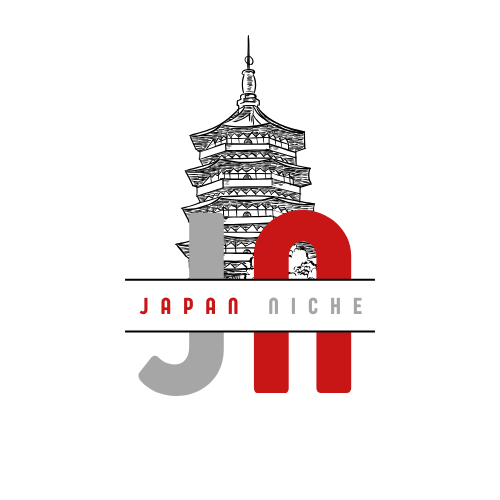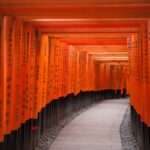Did you know that a single traditional Japanese tea ceremony can last up to 4 hours, with some tea masters training for over 20 years to perfect their craft? It’s one of those mind-blowing facts that really stuck with me during my first tea ceremony experience in Kyoto.
I’ll never forget sitting there, worried I’d make some horrible cultural faux pas. But what unfolded was one of the most serene and transformative experiences of my life. As someone who’s now participated in dozens of tea ceremonies across Japan, I’m here to guide you through everything you need to know about this beautiful tradition.
The Japanese tea ceremony, or chanoyu, isn’t just about drinking tea – it’s a choreographed art form that’s been perfected over centuries. Think of it as a moving meditation where every gesture has meaning, every moment is intentional, and yes, you’ll get to experience some of the best matcha tea you’ve ever tasted!
In this comprehensive guide, I’m going to walk you through everything: from the ceremony’s rich history to the best places to experience it Whether you’re planning your first trip to Japan or you’re a returning visitor looking to dive deeper into Japanese culture, I’ve got you covered with practical tips, insider advice, and honest recommendations.
Understanding the Japanese Tea Ceremony (Chanoyu)
Let me paint you a picture of how the Japanese tea ceremony came to be, because understanding its history completely transformed my appreciation for the experience. Back in the 12th century, Buddhist monks started drinking matcha tea as a way to stay alert during long meditation sessions. But it wasn’t until the 16th century that tea ceremony really evolved into the art form we know today.
I remember sitting in a traditional tea house in Uji, listening to my tea master explain how Sen no Rikyu, the most famous historical tea master, refined the ceremony into what’s called wabi-cha – a style that celebrates simplicity and mindfulness. He established the four core principles that still guide every ceremony today: harmony (和, wa), respect (敬, kei), purity (清, sei), and tranquility (寂, jaku).
There are actually three main types of tea ceremonies you might encounter. The formal ceremony (chaji) can last up to four hours and includes a full kaiseki meal. Then there’s the semi-formal ceremony (chakai), which runs about an hour and focuses mainly on tea and sweets. For most visitors, you’ll likely experience a simplified ceremony that’s been adapted for tourists while still maintaining the essential elements and spirit of the tradition.
What makes the tea ceremony so special is how it creates a space where time seems to slow down. The whole practice is rooted in the concept of “ichi-go ichi-e” (一期一会) – the idea that each meeting is unique and should be treasured because it can never be repeated exactly the same way again. This philosophy has deeply influenced Japanese culture and continues to shape how the ceremony is performed today.
Essential Tea Ceremony Etiquette and Rules
Let’s talk about what really makes people nervous – the etiquette. Trust me, I’ve been there! During my first ceremony, I was so focused on remembering all the rules that I nearly forgot to actually enjoy the experience. But here’s the thing: most tea masters are incredibly understanding with foreign guests and appreciate any sincere effort to respect the traditions.
First, let’s cover what to wear. You’ll want to dress modestly and comfortably – business casual is perfect. Avoid anything too flashy or revealing. I learned the hard way that wearing a pencil skirt isn’t the best choice, as you’ll need to sit in seiza (on your knees) or cross-legged. Dark, solid colors are always a safe bet. Remember to wear socks without holes, as you’ll remove your shoes before entering the tea room!
When you enter the tea room, there’s a specific way to do it. You’ll slide open the door, enter on your knees (or with a slight bow if kneeling is difficult), and move toward your designated spot. Here’s a pro tip I picked up: watch the person in front of you and mirror their movements. The most important thing is to move slowly and deliberately – this isn’t a race!
During the ceremony, you’ll need to handle various tea equipment. The most important rule is to treat everything with respect. When receiving your tea bowl (chawan), place it on your left palm and support it with your right hand. Turn the bowl clockwise two to three times before drinking – this prevents you from drinking from the front, which is considered the “guest’s side” of the bowl.
One mistake I see people make all the time is trying to photograph everything. While it’s natural to want to document the experience, many traditional tea houses prohibit photography during the ceremony. Some modern venues are more lenient, but always ask permission first. Remember, this is a chance to be present in the moment, not just capture it for social media!
Step-by-Step Guide to a Traditional Tea Ceremony
When I first started learning about tea ceremonies, I found it incredibly helpful to understand exactly what happens, step by step. After experiencing numerous ceremonies, I’ve broken it down into the key moments you’ll encounter.
The ceremony begins before you even enter the tea room. You’ll first stop at a tsukubai (stone water basin) to purify yourself by washing your hands and rinsing your mouth – symbolically leaving the outside world behind. The pathway leading to the tea house, called the roji, is designed for contemplation. Take slow, mindful steps here; it’s all part of the experience!
Once inside, you’ll notice the room is surprisingly sparse. This is intentional! The simplicity helps focus your attention on the ceremony itself. The focal point will be the alcove (tokonoma) containing a seasonal flower arrangement and hanging scroll. These aren’t just decorative – they set the theme for the gathering and deserve a moment of quiet appreciation.
The host begins by bringing in the equipment, each piece chosen specifically for the occasion. They’ll purify each item using precise, graceful movements – from the tea scoop (chashaku) to the tea bowl (chawan). It might look like a simple cleaning ritual, but these movements have been refined over centuries.
The actual tea preparation is where the magic happens. The host will measure the bright green matcha powder using the tea scoop, add hot water (at exactly 80°C – they’re very precise about this!), and whisk it into a frothy perfection using a bamboo whisk (chasen). The whisking motion creates a perfect “W” pattern on the surface of the tea – something that took me months to master when I started learning the basics.
Best Tea Ceremony Experiences in Kyoto (With Prices)
After trying countless tea ceremonies in Kyoto, I’ve narrowed down the best experiences for different budgets and interests. Let me break down my top recommendations.
En Tea Ceremony ($45-65)
Located near Kodaiji Temple, En offers an excellent introduction to tea ceremony. Their English-speaking guides are exceptional at explaining each step, and they’ve found the perfect balance between authenticity and accessibility. They offer 45-minute sessions throughout the day, making it easy to fit into your schedule.
Camellia Tea Ceremony ($55-75)
Situated in a beautiful traditional house in Southern Higashiyama, Camellia provides a more intimate experience. What sets them apart is their attention to detail in explaining the seasonal aspects of the ceremony. Their standard session runs 90 minutes, giving you plenty of time to ask questions and really understand the process.
Maikoya Kyoto ($75-95)
For those wanting a more comprehensive experience, Maikoya offers a fascinating cultural package. Their tea ceremony includes an optional kimono rental and calligraphy experience. While it’s pricier, you’re getting immense value with their thorough cultural explanations and beautiful venue near Gion.
Urasenke Tea House ($150-200)
This is the real deal – one of the most prestigious tea schools in Japan. While it’s the most expensive option, you’re experiencing tea ceremony in its purest form. Reservations must be made well in advance, usually through your hotel or a specialized travel agency. The full ceremony here can last up to three hours.
Recommended Tea Ceremonies in Tokyo
While Kyoto may be the historical heart of tea ceremony, Tokyo offers some incredibly unique experiences that blend tradition with modern Japanese culture.
Hamarikyu Gardens Tea House ($20-30)
This is my favorite spot to recommend for first-timers in Tokyo. The tea house sits in a beautiful traditional garden surrounded by skyscrapers – a perfect metaphor for Japan itself! The ceremony is simplified but authentic, and the garden setting is spectacular, especially during cherry blossom season.
Nadeshiko Tea Ceremony ($65-85)
Located in Akihabara, this unique venue offers tea ceremonies performed by hosts in kimono. What makes them special is their ability to explain complex concepts in simple terms, making the ceremony accessible to everyone. They also offer excellent vegetarian options for the accompanying wagashi sweets.
Hotel Gajoen Tokyo ($120-150)
For a luxury experience, the ceremony at Hotel Gajoen takes place in a stunning pre-war art gallery. The attention to detail is impeccable, and they offer private ceremonies for small groups. While expensive, the unique setting and museum-quality art pieces make it unforgettable.
How to Book Your Tea Ceremony Experience
After helping countless friends book their first tea ceremony, I’ve learned some valuable lessons about the booking process. First, book early – especially during peak seasons (cherry blossom season and fall foliage season). Many of the best venues fill up weeks in advance.
Most reputable tea houses now have online booking systems with English support. However, for more traditional venues, you might need to book through your hotel concierge or a local travel agency. Always check if they offer an English-speaking guide if you need one.
When comparing prices, pay attention to what’s included. Some basic ceremonies might seem cheaper but don’t include wagashi (traditional sweets) or explanations of the ceremony’s meaning. More expensive options often include additional cultural experiences or longer, more detailed ceremonies.
Tips for Getting the Most Out of Your Experience
Here’s what I wish someone had told me before my first tea ceremony! First, timing is everything. Morning ceremonies tend to be less crowded, and the light filtering through the paper screens is particularly beautiful. If possible, book a ceremony during the changing of seasons, when the decorations and ceremony itself reflect seasonal transitions.
Don’t worry too much about making mistakes – it’s perfectly normal for visitors to be unfamiliar with all the customs. The most important things are to be respectful, move slowly, and follow your host’s gentle guidance. Remember to turn off your phone completely (silent mode isn’t enough in this serene setting).
Arrive at least 10 minutes early to allow time for the initial purification rituals. If you have dietary restrictions, mention them when booking – the wagashi sweets often contain various ingredients that might not be suitable for all diets.
After participating in countless tea ceremonies across Japan, I can honestly say that each one offers something unique and meaningful. Whether you choose a casual experience in Tokyo or a formal ceremony in Kyoto, you’re participating in a tradition that has brought people together for centuries.
Remember, the beauty of the Japanese tea ceremony lies not in performing it perfectly, but in being present in the moment and appreciating the careful attention to detail that goes into every aspect. It’s an opportunity to step away from our fast-paced world and experience a moment of true tranquility.
I encourage you to book your tea ceremony experience well in advance of your Japan trip. Whether you’re a first-time visitor or a returning traveler, the ceremony offers new insights and appreciation each time. And if you’ve already experienced a tea ceremony, I’d love to hear about it in the comments below! Share your story and help other travelers prepare for this unique cultural experience.








